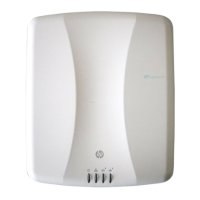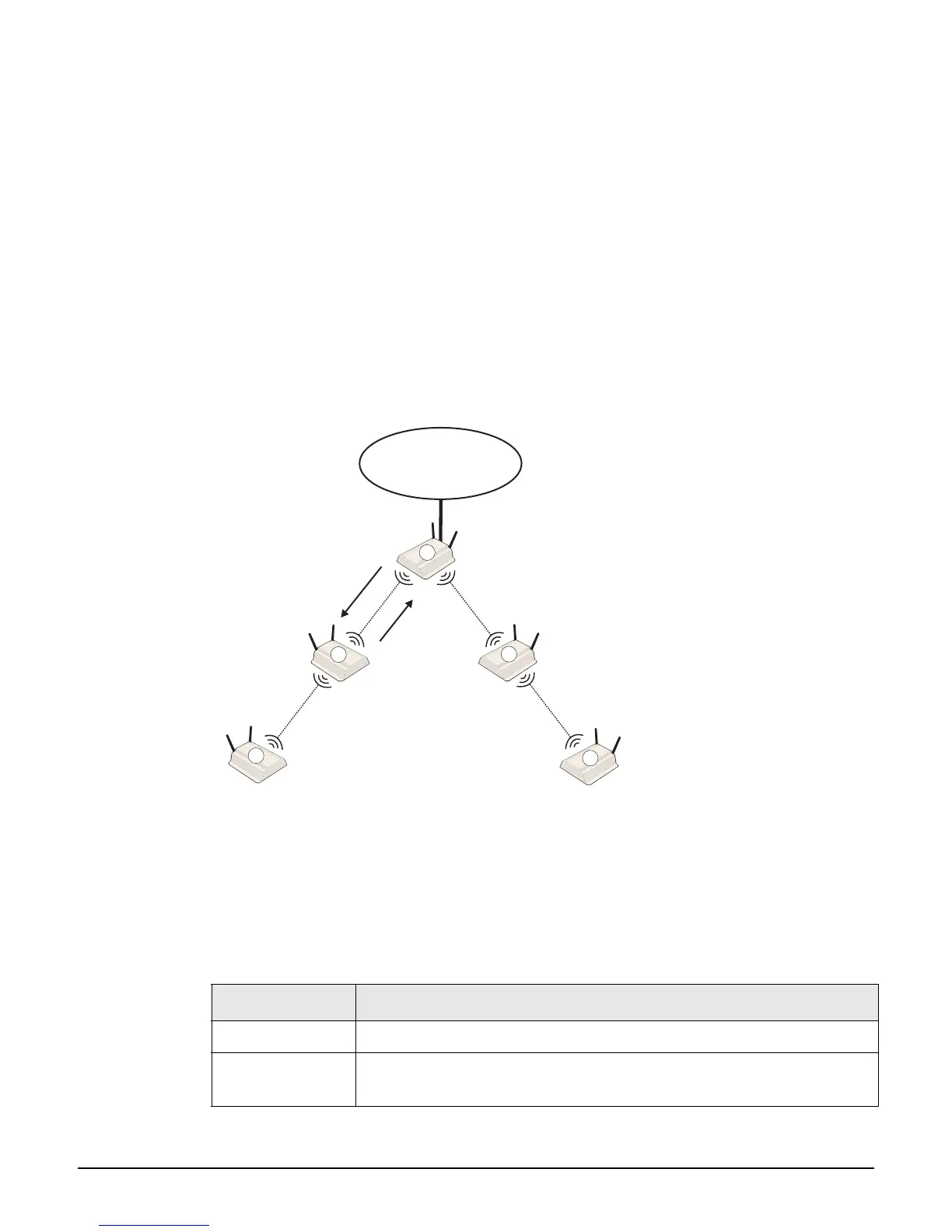Local mesh
Local mesh link types
7-4
All APs must be on the same subnet, and each AP must have a unique IP address.
If AES/CCMP security is enabled, the same key must be defined on all APs.
Only one static wireless link can be defined between any two APs.
Dynamic local mesh links
The dynamic local mesh feature enables an AP to automatically find and connect with other
APs to automatically create wireless links. When multiple APs are properly configured, they
can automatically combine to create a mesh topology that is self-configuring and self-healing.
For example, in the following scenario, a dynamic local mesh is composed of five APs. When
the APs are started, they automatically establish the connections to build the mesh based on
their role (master, alternate master, slave). If AP 2 fails, AP 4 automatically switches its
connection to AP 3.
Traffic is bridged across the wireless links, allowing users connected to any AP to reach the
root network.
Terminology
The following illustration and table define terms that are used in this guide when discussing
the dynamic local mesh feature.
Term Definition
Node An AP that is configured to support local mesh connections.
Root node The root node is configured in Master mode and provides access to
the root network.
Root network
1
Master
node
2
Alternate
Master node
Alternate
Master node
Slave node Slave node
Downstream link
Upstream link
3
4
5

